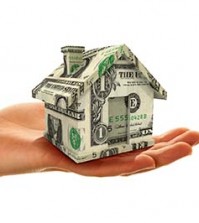- 4 Unexpected Things I’ve Learned From Buying My First Mobile Home Park
- How Ironic: America’s Rent-Controlled Cities Are Its Least Affordable
- U.S. homes are still a bargain on the international market
- Getting The Best Possible Quality Photos On MLSs and Syndicated Sites
- Home buyers in these markets have the upper hand
5 Secrets to Increasing Profits on Your Rental

Closing on a deal that meets your goals is fantastic, but it is only half the battle. I am here this week to tell you about the other half of the equation — keeping it profitable. To actually achieve those profit goals you set in your budget, you need to constantly monitor your investment’s performance and tweak things as you move along.
The first thing you need to do after a purchase is what I call Stabilizing the property. This means doing the up-front repairs, getting out the bad tenants, getting the good tenants on your lease contract and getting your longterm financing in place. Once all that is done, then you go into the longterm phase of landlording — maintain profitability.
In my ten years of investing, I have found some key actions that can make a world of difference in maintaining profitability. Here they are in no particular order:
5 Ways to Maintain Profitability
1. Keep Your Leases Current and At Market
When I purchase a building with tenants, the lease contracts are usually mismanaged. I find that the leases are month-to-month and at least 15% below market. Typically, this is because the landlord was not tracking the expiration dates of their leases. They were just letting the original contract with the original rent stay in place.
We purchased an 18-unit building this year. One of the tenants had a lease that had been in place since 1979, and their rent had only increased 3 times in that entire period!
Most residential leases are one year contracts and either auto convert to month-to-month or automatically renew for another year after the first year is up (this may not even be legal in your state, even if you lease calls for it). Either scenario is not good in my opinion.
A month-to-month is not good because the tenant can terminate the contract with very short notice, normally 30 days. The good side of this is that the landlord can change the terms of the lease with the same notice as well. This fact is a huge downside for the tenant and usually the incentive I use to enroll good tenants in a renewal lease versus staying in a month-to-month agreement. I will forgo the landlord’s benefits of a month-to-month lease in lieu of having the stability of at least a one-year contract with a good tenant in place!
An auto renewed lease is not good for you either, even if the lease has a rental increase built in. If you miss the deadline, you can’t make changes. If you rent in an area that does not have rent control, you may be leaving money on the table. What if market rate rents have increased substantially? There are also other things you may want to change aside from the rent.
What if you added amenities to the building like designated parking spaces or if you separated the utilities? If you let the lease auto renew, all the terms of the old contract stay in place, including the rent.
So the bottom line is that it pays to visit your lease contracts every year. Mark the date that you have to put a renewal in front of your tenant on your calendar. When that date comes up, take the opportunity to restructure things if you need to. All we do is send the tenants a one page renewal with any lease changes, the new rent amount and the date it takes effect. They have a certain number of days to sign it and return it, and we are both protected by a current contract.
2. Budget for and Monitor Expenses
It sounds funny to say that you need to expect to spend some money maintaining your rental portfolio, right? That being said, there are many landlords that don’t project what their expenses are going to be for the current year. If you are one of those landlords, all I can say that if you don’t plan for expenses to come up, then every expense that does will be an unwelcome surprise…
Having a budget will not only allow you to project how much money you are going to spend, it also allows you to know how much you are going to make. When Liz and I were looking to have a baby, we needed to know what our income would be a year ahead. Because we have solid financials, I was able to make financial projections that I could stand behind. When our son Zachary joined us, we had enough confidence in our financial stability for Liz to take some time off to be with him.
Additionally, if you plan on enrolling investors in your business, it’s imperative to have solid financial projections. We are able to tell our investors where our profitability will stand not just next year, but 3 to 5 years out.
It’s not that hard to create a budget. If you have owned the property for more than a year, all you need to do is look back at what you paid through the prior year. If you are already using accounting software, this is as simple as running a report. If not, just go through your prior year and categorize everything into a spreadsheet. Assuming no major one-time expenses came up (see item 3 below on Capital Improvements), you can project that what you will pay in expenses this year will be similar to the prior year. I even mark up my expenses from the last year by a few percent to factor for inflation.
3. Set Aside for Capital
Capital improvements are things you do to your rental that improve the value of the property. In accounting terms, they are not a one-year expense like a utility expense or maintenance repair would be. They are capitalized into the value of the building — adding their cost to the value of the property — and depreciate over time.
Typical examples are roof replacements and new furnaces. You can also apply major renovations, new appliances, cabinets and windows as capital improvements if you can say that they add to the value of the property. It’s a good conversation to have with your CPA before tax time comes around.
That being said, if you don’t set aside a few dollars each month to cover these things when they come up, you can end up blowing your annual budget when the furnace needs to be replaced. By setting aside some money per unit into a side savings account, you will develop a capital improvement fund for things like roof replacements or other major expenses that could be capitalized. A good rule of thumb in my area is $400 per unit per year.
4. Plan for Preventative Maintenance
Some landlords wait for problems to occur before they send someone out to do a repair. That can be very costly as the tenant may not make you aware of an issue until it gets way out of hand. Little things can turn into big things and you can’t wait for a tenant to decide when you should do some upkeep on your investment.
We do preventative maintenance walkthroughs on all our properties twice per year. We carry along a checklist and look for two kinds of issues during our walkthrough — proactive repairs and opportunities to reduce expenses.
Proactive repairs can be done immediately at a reasonable price, before they become a big expense or liability. The small roof leak the tenant didn’t want to bother you with will turn into a larger one, sooner or later. The smoke detector with the dead battery is unsafe for the tenant and a liability issue for you. The broken gutter downspout will eventually cause a water leak in your roof or basement. The list goes on and on. You can schedule to address these small things in a reasonable timeframe versus addressing them when they become an expensive emergency.
Expense reductions are ways that we as the landlord can reduce our overhead on the building, primarily by reducing utility expenses on multi-family properties. Put simply, we find things that are leaking that aren’t supposed to be! That includes faucets, toilets, window seals and door seals. We own a few 4-unit buildings that are identical and right next door to each other. When I got the water bill, I saw that building A had a water bill that was $200 higher than building B for the same quarter. On a site inspection the culprit was found — a toilet in a tenant’s apartment was running all the time!…








 100% Secure
100% Secure
You must be logged in to post a comment Login